CONIDAE
Family Conidae
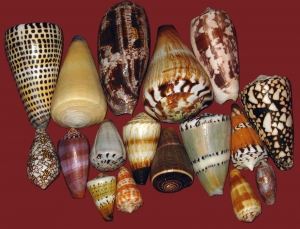
Family: Conidae
Conidae:
Contents
Conidae are one of the most popular families among marine biologists and seashell collectors.

Conus textile (Conidae)
Habitat:
They are mainly inhabitants of warm tropical seas and oceans worldwide, and their greatest species diversity occur in the Western Indo-Pacific region.
However, some species are adapted to temperate environments, such as Cape coast of South Africa,[1,2] the Mediterranean,[3] or the cool waters of Southern California (Conus californicus) [4], and are endemic to these areas.

Conus californicus, pecies that adapted to the cool waters of Southern California
Diagnostic characters:
Diagnostic characters of cone shells are: a flat top, conical in shape, a long slit-like aperture lip extending from a very short siphonal opening to nearly the top. they have a small, narrowly oblong, chitinous operculum. They vary considerably in size, color and pattern. Cone shells are carnivorous and feed mainly on other mollusks, worms and even small fish using their detachable teeth, harpoon-like, to sting and paralyse prey.
Venom:
The most venomous conus is conus geographus, the venom is powerful enough to be lethal to collectors who are not careful in handling the cone shell. More than 800 different species of cone snails are recognized[5].
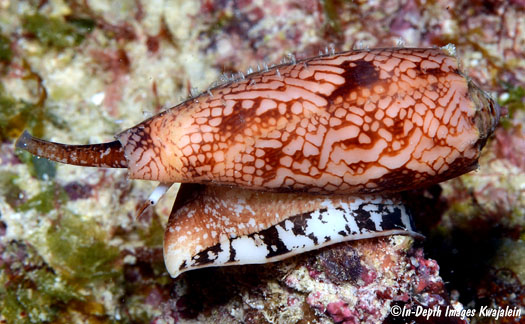
The most venomous conus is conus geographus
Representative Conus species native to Hainan China (shot by Cheng Li).
Anatomy of CONIDAE:
Anatomy of CONIDAE
Taxon Details
Kingdom: Animalia
Phylum: Mollusca
Class: Gastropoda
Subclass: Caenogastropoda
Order: Neogastropoda
Superfamily: Conoidea
Family: Conidae
References:
Image references are already available below each image
- Tenorio, M.J. & Monterio, A.J. (2008). The Family Conidae. The Southern African species of Conus. In: Poppe, G.T. & Groh, K. (eds): A Conchological Iconography. Hackenheim ConchBooks. 47 pp., 60 pls.
- Branch, G.M., Griffiths, C.L., Branch, M.L., Backey, L.E. (2010). Tow oceans: a guide to the marine life of Southern Africa. Cape Town: Struik Nature. ISBN 978-1-77007-772-0.
- Monterio, A.J., Tenorio, M.J. & Poppe, G.T. (2004). The Family Conidae. The West African and Mediterranean species of Conus. In: Poppe, G.T. & Groh, K(eds): A Conchological Iconography. Hckkenheim: ConchBooks. 102pp. 164 pls.
- Tenorio, M.J. Tucher, J.K. & Chaney, H.W. (2012). The Families Conilithidae and Conidae. The Cones of the Eastern Pacific. In: Poppe, G.T. & Groh, K. (eds): A Conchological Iconography. Hackenheim: ConchBooks. 112 pp., 88 pls.
- Buchet, P., Gofas, S. (2015). Conus Linnaeus, 1758, Accessed the rough: World Register of Marine Species at marinespecies. org on 2015-03-29.
Author:
Dr. Nabavi, Seyyed Mohammad Bagher
Professor of marine biology
See Conidae samples in Museum Main Hall
See general and scientific articles related to seashells in publications page

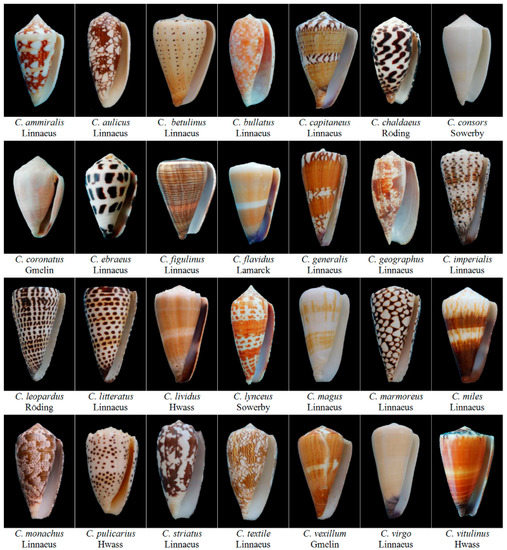
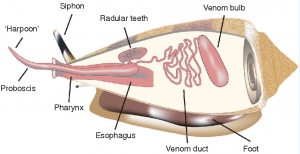
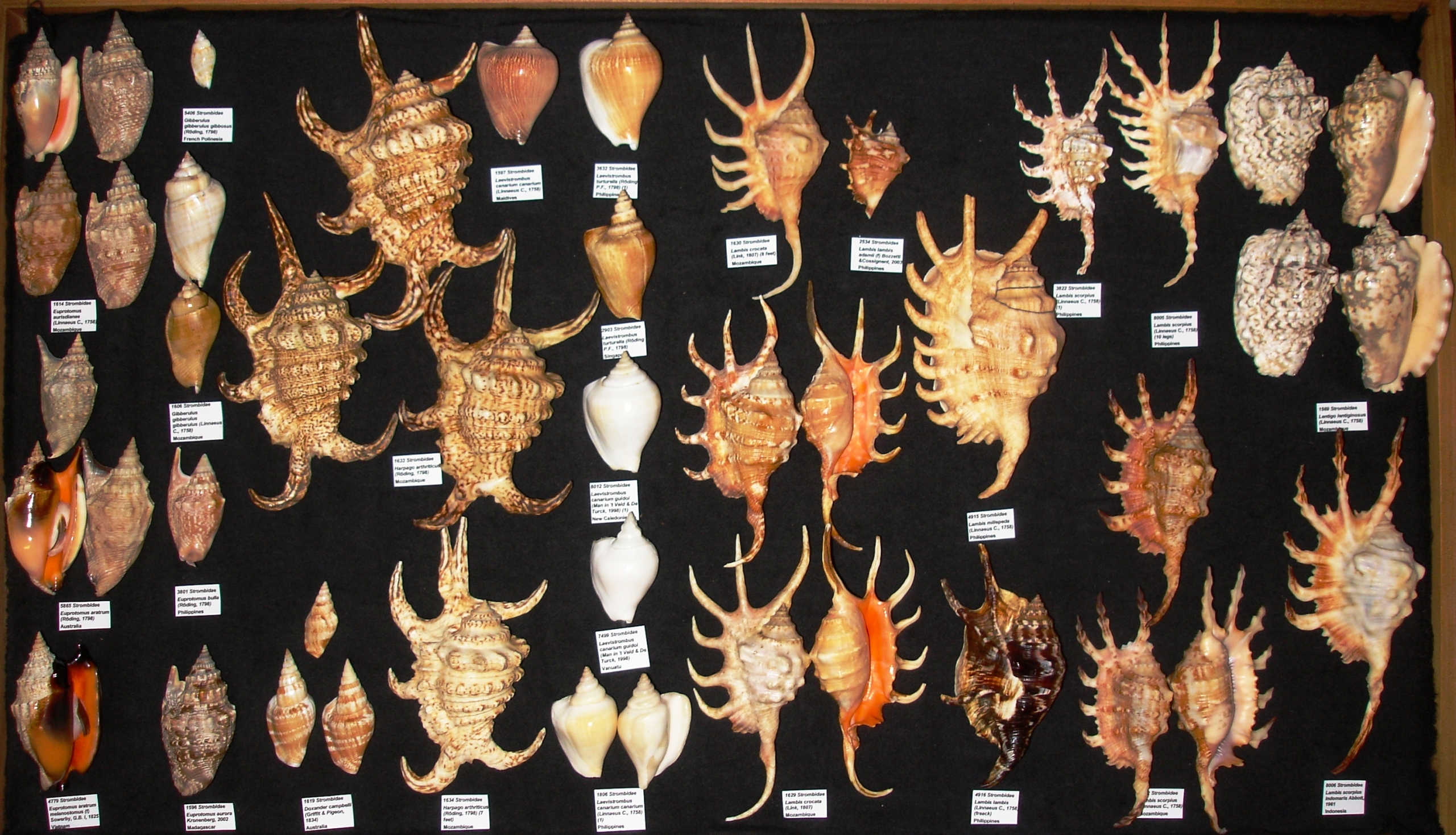
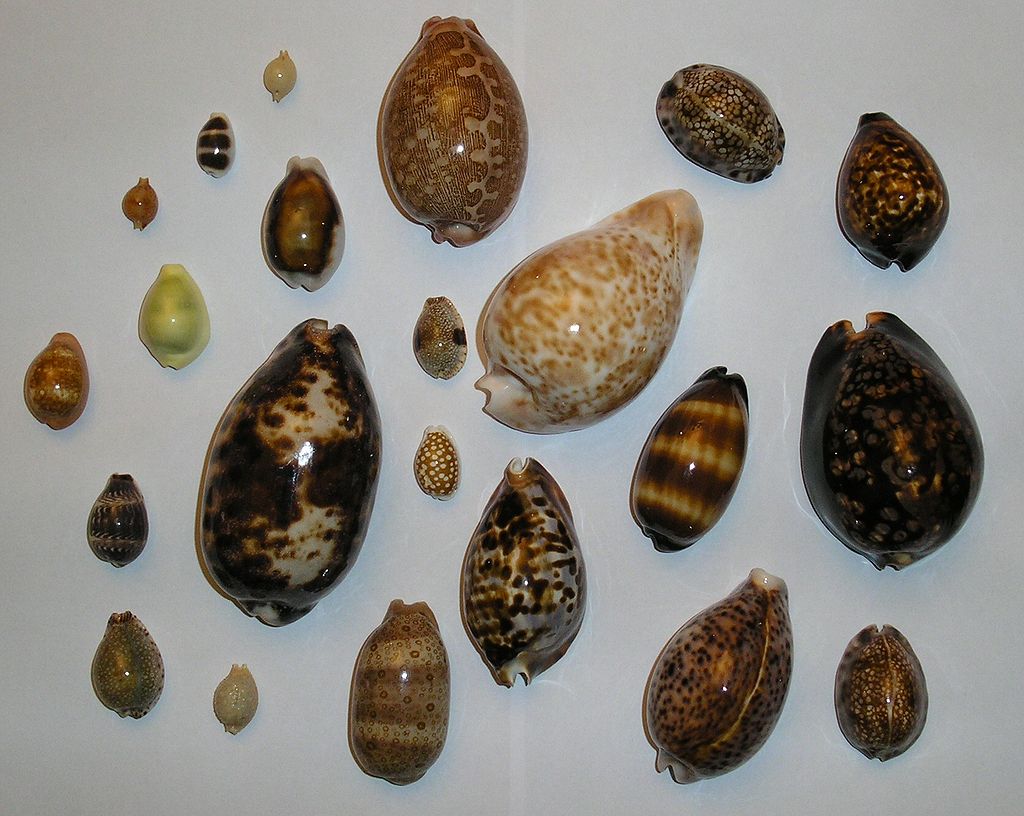
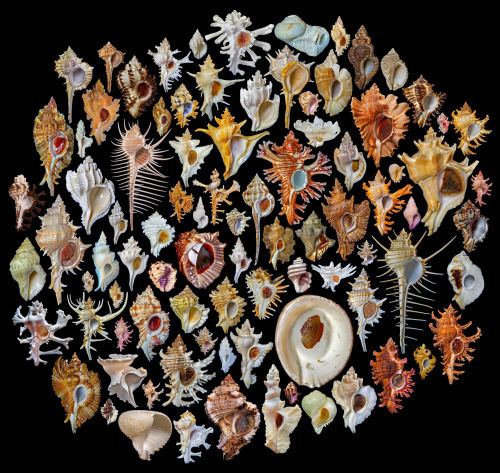
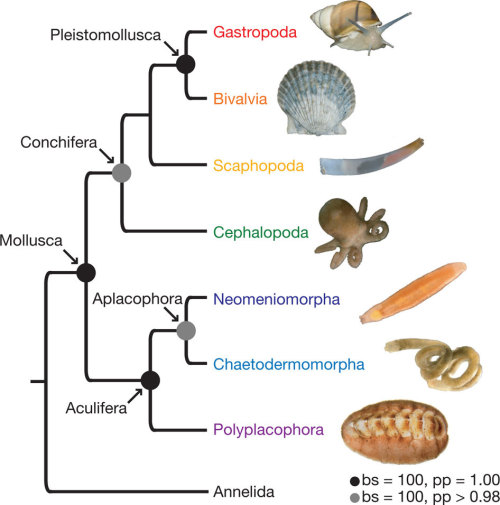
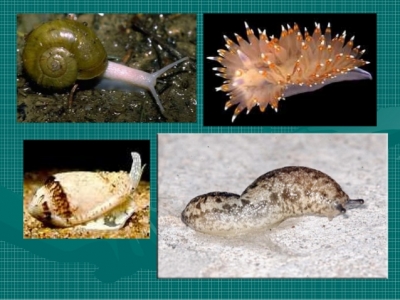
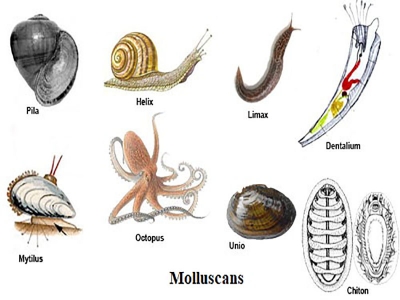
https://waterfallmagazine.com
Heya i’m for the first time here. I came across this board and I find It
truly useful & it helped me out much. I hope to give something
back and aid others like you helped me.